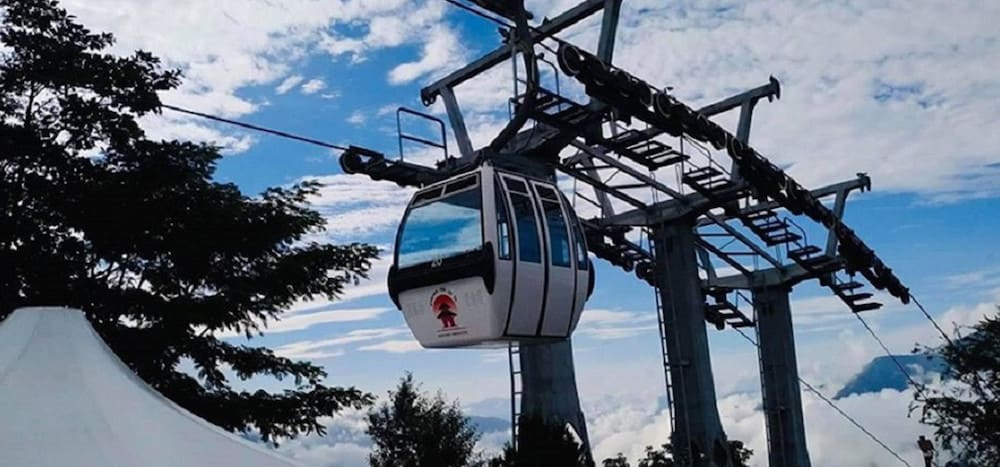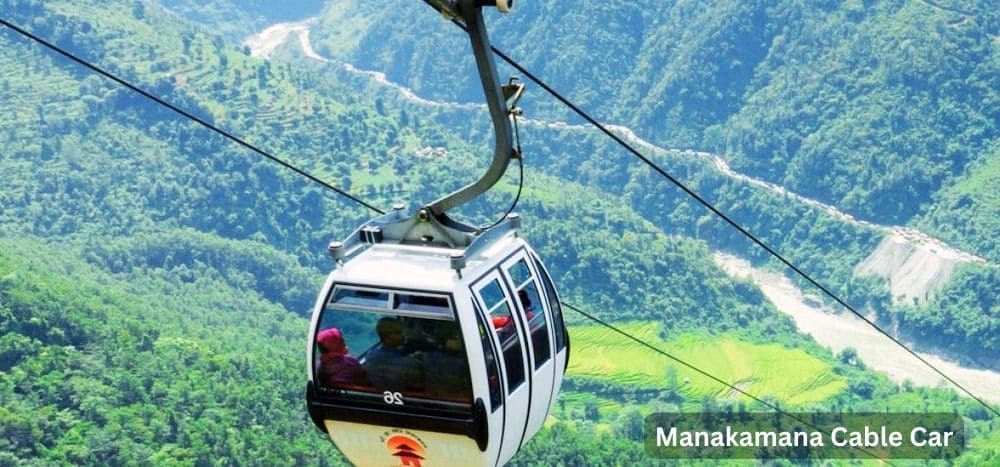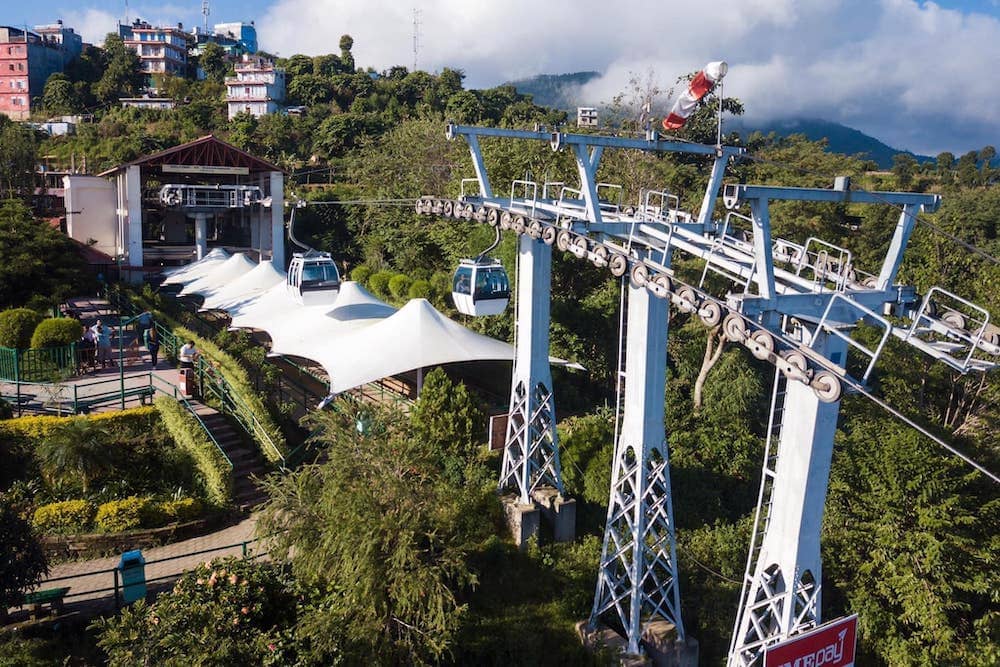The Mankamana Darshan (P) Ltd. was developed by the Chitawon Co-E Group, a pioneer in the tourist and service sectors, founded by the late Laxman Babu Shrestha. The Manakamana Cable Car has transformed how visitors get to Gorkha’s top-of-the-hill Manakamana Temple, one of the holiest Hindu pilgrimage sites. The public now has easy access to the mountaintop temple from Cheres in Chitwan’s Icchakamana Rural Municipality.
There is a rich history of cable cars and ropeways in Nepal. They have been helping facilitate the movement of goods and people throughout the country and over difficult terrain. However, on November 24, 1998, Nepal’s first-ever commercial cable car service went into operation. The Doppelmayr Group provided the system, which is renowned for its effectiveness and performance.
Over a million pilgrims are served annually by Manakamana Darshan and enjoy the famous temple in Nepal. Moreover, the visitors also enjoy views of the Himalayas to the north.
If you want to be one of the many that use the cable car service, then read this article. In this blog, I discuss the cable car and answer some of the most frequently asked questions about Nepal’s first commercial cable car!
Where is the Manakamana Cable Car Located?
The cable car is located in Chitwan and Gorkha. The lower station starts in Cheres, Chitwan, and the upper station, where the cable car ends, is at Manakamana, Gorkha.
Additionally, the Cable Car Station is about 2 hours and 10 minutes west of Kathmandu (about 106 Km), 2 hours and 30 minutes east of Pokhara (95 Km), and 2 hours from Chitwan (76 Km).
What is the Manakamana Cable Car Length?
The cable car is 2.8 kilometers or 1.7 miles long, and It takes roughly 10 minutes to complete a trip in the gondola. The cable car starts at the base station in Cheres, Chitwan, at the height of 258 m (846 ft) and finishes at the top station in Manakamana, Gorkha, at an elevation of 1,302 m (4,272 ft).
Manakamana Cable Car Timing (Opening Hours)
The cable car operates from 9 am to 5 pm during the day and breaks from noon to 12:30 pm for lunch.
Additionally, daily maintenance is done on the cable car before and after its regular working hours. According to the Doppelmayr standard, the cable car rests for a couple of days every four months.
Why is the Cable Car so Famous?
The cable car gives access to the holy Manakamana Temple. According to Hindu legend, the temple is called Manakamana Devi after the incarnation of Bhagawati, who granted the requests of pilgrims with the purest hearts. Additionally, it is said that your wishes will be granted by visiting the temple.
West of Kathmandu, on a hill measuring 1300 meters, the temple can be found overlooking the Marshyangdi and Trishuli rivers. On a clear day, pilgrims can see the Manaslu, Himalchuli, and Annapurna peaks in spectacular detail.
What was the first cable car in Nepal?
The Manakamana Cable Car was the first cable car in Nepal. Service began on 24 November 1998 and was inaugurated by his Royal Highness, the Late Crown Prince Dipendra. It starts at Cheres, Chitwan, and ends at Manakamana, Gorkha, next to the Manakamana temple – the wish-fulfilling goddess, located at the height of 1302 meters.
What is the Manakamana cable car ticket price?
Round trip tickets cost: 700 NPR for Nepali, 880 NPR for Indian Nationals, USD 10 for SAARC/Chinese nationals, and USD 20 for foreigners.
For a complete account of ticket prices for the Manakamana Cable Car, please refer to the table below. The table has been copied from the official Mankamana Darshan (P) Ltd website.
| Passenger/Particular | One Way | Round Trip |
|---|---|---|
| Nepali | Rs. 410.00 | Rs. 700.00 |
| Child | Rs. 245.00 | Rs. 420.00 |
| Student | Rs. 305.00 | Rs. 525.00 |
| Senior Citizen (Above 60 years) | Rs. 285.00 | Rs. 490.00 |
| Person with Disability | Rs. 205.00 | Rs. 350.00 |
| Indian Adult | Rs. 520.00 | Rs. 880.00 |
| Indian Child | Rs. 336.00 | Rs. 576.00 |
| SAARC/Chinese | US$ 6.00 | US$ 10.00 |
| SAARC/Chinese Child | US$ 4.00 | US$ 7.00 |
| Foreigner | US$ 11.00 | US$ 20.00 |
| Child Foreigner | US$ 8.00 | US$ 15.00 |
| Goat | Rs. 250.00 | |
| Goods Per Kg | Rs. 17.00 |
The following are notes regarding the prices of riding on the Manakamana Cable Car:
- Children are categorized by their height. Children above 3 ft and up to 4 ft height qualify for a child ticket.
- Sixty years and above qualify for a senior citizen ticket.
- Senior citizen and student tickets require proof of ID card.
- 15 kg baggage is allowed free of charge. Baggage exceeding the limit will be charged @NPR 17 per kg.
- Rates are subject to change without prior notice.
The Technical Features of the Manakamana Cable Car:

The following table shows the technical features and specifications of the cable car.
| Technical Feature of Cable Car | Specification of Cable Car |
|---|---|
| Cabin capacity | 6 passengers |
| Horizontal distance | 2774.20 m |
| Vertical rise | 1033.60 m |
| Inclined distance | 3023.75 m |
| Haul rope diameter | 41mm |
| Bull wheel diameter | Top 4.8 m, Bottom 4.4 m |
| Design speed | 0.3–6m/s |
| Operating speed | 3.5–6m/s |
| Turn around trip time | 8.24 minute |
| Hourly capacity | 660 passengers/hour |
| Number of stations | 2 |
| Number of in-line towers | 20 |
| Height of tallest tower | 41 m |
| Longest free span | 516 m (between Tower 5 and Tower 6) |
| Steepest gradient | 37 degrees |
Manakamana Cable Car Contact Details:
Name: Manakamana Darshan Pvt. LTD.
Location: Kurintar, Chitwan
Phone Number: 056-410044, 056-410012
Email: info@manakamanacablecar.com
Cable Cars in Nepal:
The commercial success of the Manakamana Cable Car has led to the development of additional ropeways in Nepal. As of 2022, there are currently four cable cars in operation for commercial and tourism purposes. One of the cable cars is the Manakamana Cable Car, the other three cable cars in Nepal are as follows:
1. Chandragiri Cable Car
The Chandragiri Cable Car in Kathmandu was completed in 2016 and is located on the outskirts of the Kathmandu Valley. It is on a mountaintop that provides magnificent views of the Himalayas, including the Everest and Annapurna Himalayan Ranges. One thousand passengers can ride in these 38 gondolas per hour. The ascent to Chandragiri’s summit takes about 8 minutes and is about 2.5 kilometers in length.
2. Kalinchowk Cable Car:
The Kalinchowk cable car made its debut in November 2018, which helps passengers go from Kuri village to the Kalinchowk shrine. The Hindu Kalinchowk Bhagwati Temple is close to the Kathmandu Valley and is a famous pilgrimage site for people to pray. It can be found in Dolakha, at 3,755 meters above sea level.
Langtang Himal, Ganesh Himal, Shisha Pangma, Dorje Lakpa, Jugal Himal, and Gauri Shankar are all seen from the summit of Kalinchowk. The view from Kathmandu’s outskirts can be observed on clear days. In the winter, Kalinchowk is renowned for its snow, attracting many people from the Kathmandu Valley.
3. Annapurna Cable Car
The Annapurna Cable Car in Pokhara is a must-visit for anyone traveling to Lakeside. It provides easy access to the famous viewpoint at Sarangkot, which gives a beautiful panoramic view of the Himalayas to the north and views of Phewa Tal and Lakeside.
The Annapurna cable car was opened in early 2022 and is the newest addition to commercial ropeways in Nepal.
Manakamana Cable Car: Where Wishes Come True!

Cable cars and ropeways in Nepal have been helping facilitate the movement of people and goods for over 100 years. However, when the Manakamana Cable Car began its service in Chitwan and Gorkha in 1998 is when ropeways became commercialized.
Fast forward over 20 years, and three other services have been built, with many others in the works – like the Butwal Cable Car, which is expected to be completed in 2023. With such difficult terrain, it is no wonder that these ropeways are becoming more popular.
If you find yourself traveling from Kathmandu to Pokhara, and have extra time, make sure to stop by the Manakamana Cable Car and enjoy a piece of history by riding on the gondola and seeing one of the most famous temples in Nepal: The Mankamana Mandir, the incarnation of Bhagawati! You never know; you may have all your wishes granted while visiting the temple.
